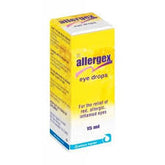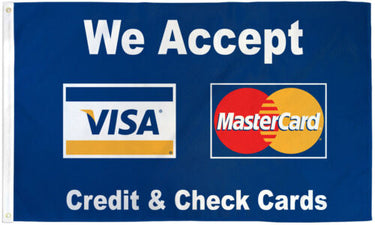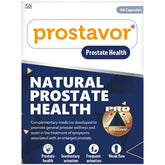Dupuytren's contracture
What is Dupuytren's Contracture?
Dupuytren's contracture is a progressive hand condition characterized by the thickening and tightening of the connective tissue beneath the skin of the palm and fingers. This thickening forms nodules or cords that can gradually pull one or more fingers into a bent position, making it difficult to fully extend the affected digits. Dupuytren's contracture typically develops slowly over time and can cause functional limitations in hand movement and grip strength.
Causes of Dupuytren's Contracture
The exact cause of Dupuytren's contracture is not fully understood, but several factors may contribute to its development, including:
- Genetic predisposition: Dupuytren's contracture tends to run in families, suggesting a genetic component to the condition. Certain genetic variations may increase the risk of developing abnormal connective tissue changes in the hand.
- Age and gender: Dupuytren's contracture is more common in older adults, particularly men over the age of 50. However, it can affect individuals of any age and gender.
- Ethnicity: Certain ethnic groups, such as individuals of Northern European descent, have a higher prevalence of Dupuytren's contracture.
- Lifestyle factors: Smoking, alcohol consumption, and manual labor or repetitive hand activities may increase the risk of developing Dupuytren's contracture, although the exact mechanisms are unclear.
Symptoms of Dupuytren's Contracture
Symptoms of Dupuytren's contracture may include:
- Thickening or nodularity of the palm, typically near the base of the fingers.
- Development of firm, raised cords or bands of tissue beneath the skin of the palm and fingers.
- Progressive flexion contractures, where one or more fingers become bent or pulled towards the palm, particularly the ring finger and little finger.
- Difficulty fully extending the affected fingers, resulting in limited hand function and grip strength.
- Pain or discomfort may be present in some cases, particularly if the contracture interferes with hand movement or activities of daily living.
Diagnosis of Dupuytren's Contracture
Diagnosing Dupuytren's contracture typically involves a combination of clinical evaluation and physical examination by a healthcare professional, including:
- Medical history: Gathering information about the patient's symptoms, medical history, family history of Dupuytren's contracture, and any associated risk factors.
- Physical examination: Assessing the hands, palms, and fingers for signs of thickening, nodularity, or contractures. The healthcare provider may also perform specific tests to evaluate hand function and range of motion.
- Dupuytren's contracture staging: Classifying the severity of Dupuytren's contracture based on the degree of finger flexion contractures, presence of nodules or cords, and functional impairment.
- Imaging studies: In some cases, imaging tests such as ultrasound or magnetic resonance imaging (MRI) may be performed to assess the extent of tissue involvement and plan for surgical intervention if necessary.
Treatment of Dupuytren's Contracture
Treatment for Dupuytren's contracture depends on the severity of symptoms, degree of finger contracture, and functional impairment. Treatment options may include:
- Watchful waiting: In mild cases with minimal symptoms or contracture, a conservative approach may be recommended, with regular monitoring and observation of disease progression.
- Non-surgical interventions: Non-surgical treatments such as hand therapy, splinting, steroid injections, or collagenase injections (enzyme therapy) may be considered to help improve hand function and delay the need for surgery.
- Surgical intervention: For moderate to severe cases of Dupuytren's contracture with significant finger contractures or functional limitations, surgical procedures such as fasciotomy, fasciectomy, or needle aponeurotomy may be performed to release or remove the thickened tissue and improve finger extension.
- Post-operative rehabilitation: Following surgery, hand therapy and rehabilitation exercises may be prescribed to promote wound healing, restore hand function, and prevent recurrence of contractures.
Management and Support for Dupuytren's Contracture
In addition to medical and surgical interventions, individuals with Dupuytren's contracture can implement various management strategies to optimize hand function and quality of life, including:
- Hand exercises: Performing regular stretching and strengthening exercises prescribed by a hand therapist or healthcare provider to maintain range of motion and prevent stiffness.
- Assistive devices: Using adaptive aids, ergonomic tools, or assistive devices such as hand splints or grips to support hand function and facilitate activities of daily living.
- Education and support: Seeking information and support from healthcare professionals, patient advocacy groups, or online communities to learn about Dupuytren's contracture, treatment options, and coping strategies.
- Lifestyle modifications: Adopting healthy lifestyle habits such as smoking cessation, moderation of alcohol consumption, and avoidance of repetitive hand activities to minimize the risk of disease progression and recurrence.
When to Seek Medical Attention for Dupuytren's Contracture
Individuals experiencing symptoms of Dupuytren's contracture, such as progressive finger stiffness, nodularity, or contractures that interfere with hand function, should seek evaluation and treatment from a healthcare professional. Early diagnosis and intervention can help prevent complications, optimize treatment outcomes, and improve quality of life for individuals affected by Dupuytren's contracture.
In conclusion, Dupuytren's contracture is a progressive hand condition characterized by the thickening and tightening of connective tissue in the palm and fingers, leading to finger contractures and functional limitations. With appropriate diagnosis, treatment, and management strategies, individuals with Dupuytren's contracture can achieve improved hand function and maintain an active lifestyle.
- Complication of Dupuytren's contracture
- Diagnosis of Dupuytren's contracture
- Dupuytren's contracture
- Dupuytren's contracture myths
- How is Dupuytren's contracture treated?
- Medicine for Dupuytren's contracture
- Remedies for Dupuytren's contracture
- Support for Dupuytren's contracture
- Symptoms associated with Dupuytren's contracture
- The best British Online Pharmacy
- Top 10 UK Pharmacies
- Treatment for Dupuytren's contracture
- What causes Dupuytren's contracture
- What is Dupuytren's contracture
- Where can I buy medicine for Dupuytren's contracture in the UK
- ZimSeller Pharmacy



















